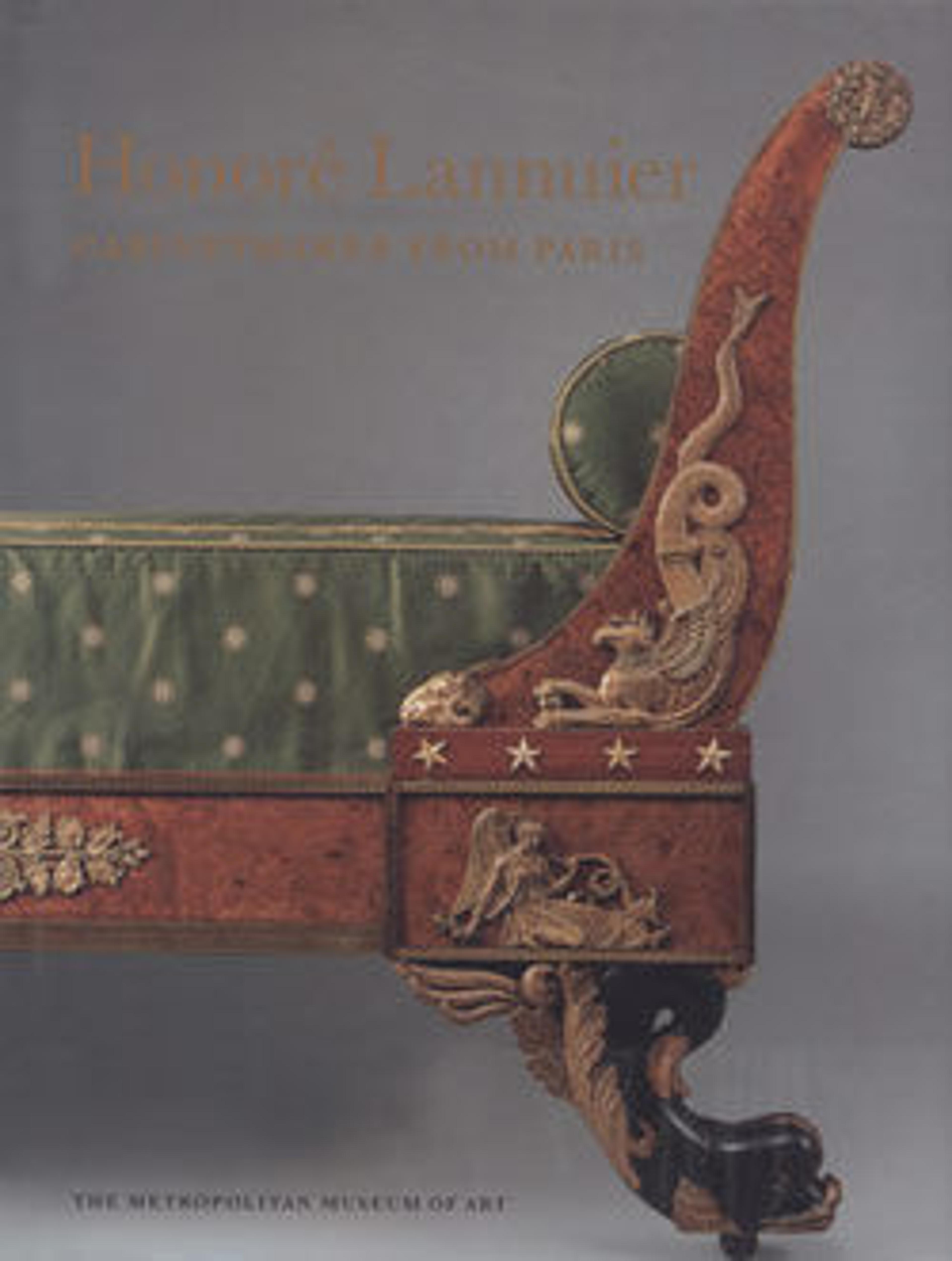Sideboard Table
Flame-grain mahogany veneers contrast with straight-grain mahogany crossbanding to enliven the facade of this massive architectural sideboard from the shop of the Parisian émigré cabinetmaker Charles-Honoré Lannuier. The "French" sideboard, first made in the United States around 1810, became the predominant dining room storage and display furniture form in American homes in the first half of the nineteenth century. The sideboard's name derives from its close relationship to the French Empire desserte, a similarly massive form with four cupboard doors, a frieze of drawers, and columns terminating in lion's-paw feet.
Artwork Details
- Title: Sideboard Table
- Maker: Charles-Honoré Lannuier (France 1779–1819 New York)
- Date: 1812–19
- Geography: Made in New York, New York, United States
- Culture: American
- Medium: Mahogany, tulip poplar, white pine
- Dimensions: 57 x 76 3/8 x 27 3/4 in. (144.8 x 194 x 70.5 cm)
- Credit Line: Gift of Fenton L. B. Brown, 1972
- Object Number: 1972.235.1
- Curatorial Department: The American Wing
More Artwork
Research Resources
The Met provides unparalleled resources for research and welcomes an international community of students and scholars. The Met's Open Access API is where creators and researchers can connect to the The Met collection. Open Access data and public domain images are available for unrestricted commercial and noncommercial use without permission or fee.
To request images under copyright and other restrictions, please use this Image Request form.
Feedback
We continue to research and examine historical and cultural context for objects in The Met collection. If you have comments or questions about this object record, please contact us using the form below. The Museum looks forward to receiving your comments.
